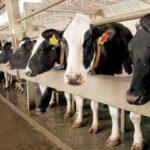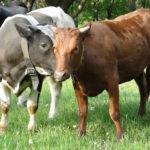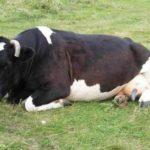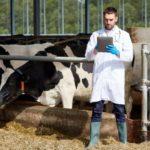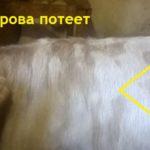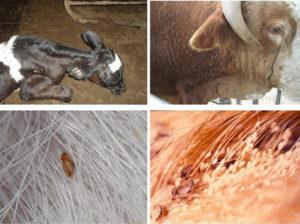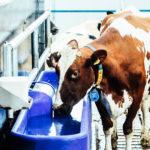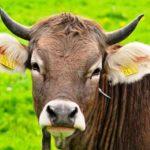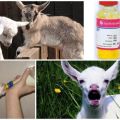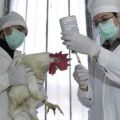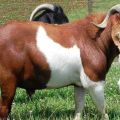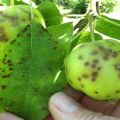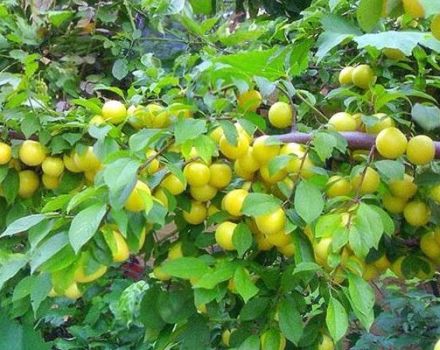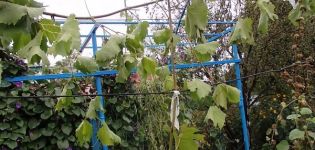Why does a cow sweat a lot, causes and treatments
Normally, sweating in cows protects the animal from overheating, thus the body reacts to changes in environmental conditions and maintains a constant temperature, ensures the full functions of internal organs. Why the cow begins to sweat more than usual - the reason for this can be physiological changes and diseases of various etiologies.
Causes of Cow Sweat and Treatment Methods
A cow can sweat if the intake of vitamins and minerals is insufficient. The animal can lick the floor, gnaw off plaster from the walls, gnaw on boards. If the breeder notes this behavior of the cow, it is better to contact the veterinarian to take a blood test and find out which substances are deficient in the body.
It is important to observe the animal for signs that indicate a disease:
- mood - whether the cow behaves as usual, not lethargic and apathetic;
- condition of the nose - it should be moist and cool to the touch;
- appetite - if it is preserved, it is unlikely that increased sweating is caused by a disease;
- breathing - normally the animal should breathe freely, without coughing and audible wheezing;
- milk yield - a sick cow will produce less milk.
Another harmless cause of excessive sweating is cow covering by a bull. If the animal does not have worms, the body temperature is normal, there are no signs of disease, but hyperhidrosis is present, the symptom will go away on its own after calving.
Traumatic reticulitis
Together with food, a small nail, a piece of wire, which moves along the tract and comes out with feces, can enter the digestive tract of a cow. It happens that a metal object gets stuck in the mesh of the stomach. Returning with food for re-chewing, the foreign body pierces the walls of the stomach, liver, mesentery and even the lining of the heart. As a result, purulent inflammation, pericarditis and liver damage develop.
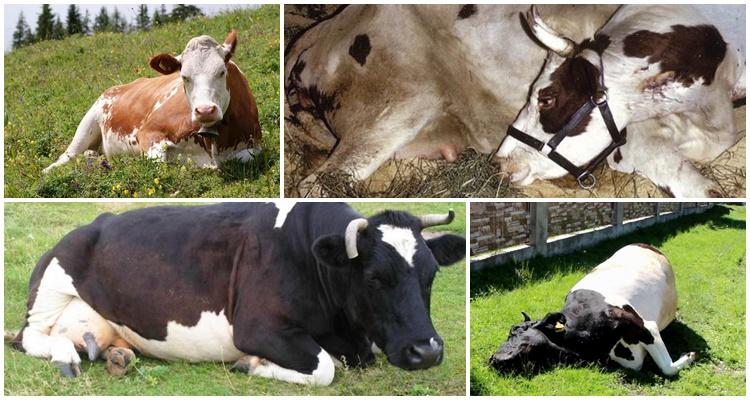
Symptoms of traumatic reticulitis:
- lethargy;
- refusal of a cow from food;
- excessive sweating;
- arching the back;
- swelling of the scar;
- loss of body weight;
- alternation of constipation and diarrhea.
To prevent metal damage to internal organs, a magnetic trap in a plastic frame is used - it is placed in the proventriculus, the trap collects metal objects. If a foreign body has already got inside, a magnetic probe is used - it is inserted into the proventriculus, and after a couple of hours it is removed along with a metal object. While waiting, the cow should be allowed to move actively.
Contagious diseases
The farmer needs to immediately worry if cattle show serious symptoms - the cow lies in the barn all wet at night, she has shortness of breath and cough, hair falls out, there is no appetite, and stool is disturbed (diarrhea).
Increased sweating is present as a reaction to pain syndrome associated with the following diseases:
- bronchopneumonia;
- heart disease - pericarditis, myocarditis;
- ketosis;
- urogenital infectious diseases;
- infestation with worms;
- lice.
Treatment is selected depending on the disease causing the sweating and associated symptoms. For diseases of the bronchi and lungs, urogenital infections, antibiotics are used.
Overheat
Usually cows overheat in the hot summer in the pasture. In the morning and at night, cattle are covered with sweat in a cramped stall with crowded housing. You should watch the livestock - whether one individual sweats or all at once, whether the hyperhidrosis passes when the external conditions change.
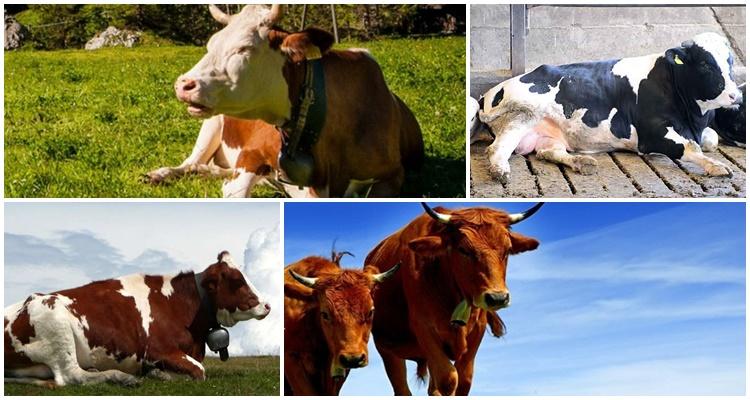
What can be done:
- install a ventilation system in the stall - think over skates on the roof through which hot air will go out, and vents for fresh air;
- more often arrange ventilation of the barn in the summer season;
- leave cows to spend the night outside, weather permitting.
If the cow is covered with sweat in the heat, in order to avoid heatstroke, it must be taken to a shady place, given cool (but not ice-cold) water, and abundantly water the skin with liquid.
Stress
Hyperhidrosis develops in cows in stressful situations:
- when the farmer treats animals roughly;
- during transportation;
- immediately after calving - if it was difficult;
- after the morning milking;
- as a result of fright - stress can be delivered by ferrets and weasels visiting the stall. They run along the back of the animal and even stick to the udder in the period after calving, forcing the cow to move actively;
- as a result of injury;
- at check weighing.
To avoid stressful situations, cows should not be roughly treated. It is important to show care and patience, to protect animals from fear.
Acobaltose
Disease of cows caused by cobalt deficiency in soil and plants growing on soil deprived of the component. The disease is manifested by erased symptoms:
- decreased appetite;
- losing weight within 2-3 months;
- engorgement of the skin, loss of its elasticity;
- increased sweating;
- weakened intestinal peristalsis;
- weakening of the muscles of the back and legs;
- hard feces;
- alternation of diarrhea and constipation.
The diet should include feed enriched with cobalt - alfalfa, feed yeast, clover, meat and bone meal and fish meal. Recovery is noted 1.5 months after the start of treatment.
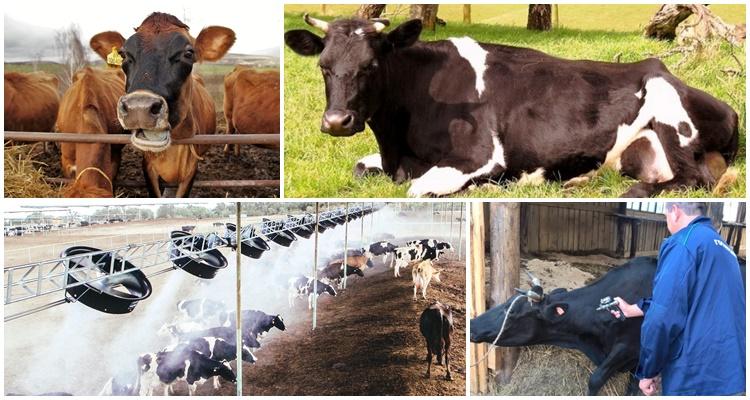
Alimentary diseases
The main factors causing sweating in cattle are diseases of the alimentary tract that have arisen after poisoning with poor quality feed. If the food is frozen, moldy, pathogenic microorganisms - fungi, bacteria, grow in it, barn mites (strong allergens for cattle) are bred.
It is important to store the feed correctly, use acidifiers so that they do not deteriorate. When adding industrial waste to the diet, it is necessary to monitor the quality and shelf life of stillage, meal and bagasse.
During grazing, you should pay attention so that the cows do not eat the seeds and berries of poisonous plants. Treatment of poisoning is prescribed by a veterinarian, depending on the severity of the disease and the condition of the animal.Antibiotics, bacteriophages, saline solutions for soldering and intravenous administration, anti-inflammatory and analgesic agents can be used.
Preventive actions
In most cases, hyperhidrosis in cattle is caused by physiological reasons and by farmers ignoring sanitary and hygienic standards in stalls. To avoid sweating in a cow caused by any disease, preventive measures must be followed, including:
- balanced nutrition, depending on the season, with the use of vitamin supplements and vitamin-containing feed in the autumn-spring periods when the immunity of cattle is weakened;
- regular examinations by a veterinarian, routine vaccination of livestock;
- creation of good conditions for keeping cows - timely cleaning of premises from manure, prevention of drafts, high humidity, dampness;
- disinfecting measures using a solution of bleach in 3% concentration, 20% fresh lime, sodium hydroxide solution in hot form in 4% concentration;
- timely prevention of parasitosis.
To prevent sharp and metal objects from entering the food of the cows, it is worth checking it manually with a magnet before loading the feed into the feeders.
Excessive sweating in a cow is a signal of problems with the animal's health. Swallowing metal objects is most dangerous, as this sometimes requires culling livestock. Timely prevention of diseases will avoid sweating and its accompanying symptoms.

